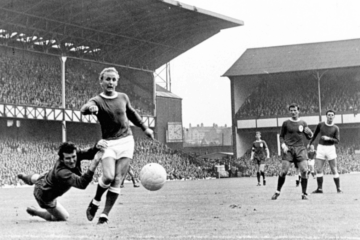Rob Sawyer

The so-called ‘The Secret Footballer’ has been producing an anonymous column for The Guardian newspaper for over a decade. This, along with (to date) five books lifts the lid on the life of a professional soccer player. Speculation has been rife as to the identity of the author, with a former Reading and Stoke City forward being many amateur sleuths’ pick.
The concept is nothing new, however. Over 70 years before this mystery player submitted his first column to the Guardian, a top-flight footballer was doing something very similar for the weekly Topical Times magazine – and he played for Everton. The Player’s Weekly Diary ran from the autumn of 1937 to May 1939 – it might have continued, but for the outbreak of war.
The identity of the player was not hard to deduce, from the descriptions of matches and other events alluded to. Before long, many young members of the magazine’s readership were writing to Billy Cook, the Toffees’ Northern Irish full-back, demanding to know if it was him.
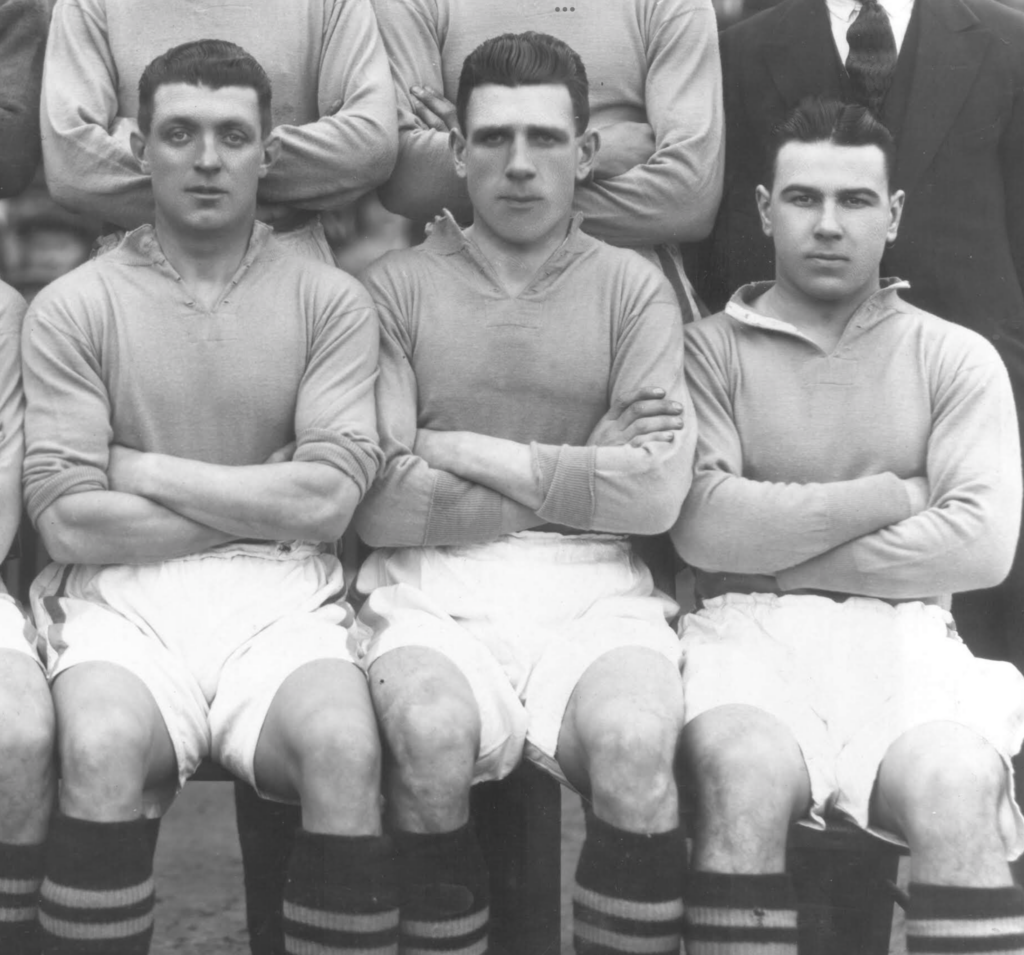
It was indeed, Cook, Coleraine by birth, but Clydeside by upbringing, who had had submitted his weekly reports on life as a footballer. Signed from Celtic in 1932 to fill the void left by an injury to Ben Williams, Cook (who signed autographs as both ‘Billy’ and ‘Willie’) was a tough defender, blessed with the fine touch of an inside-forward. He served as vice-captain to Jock Thomson when the Blues advanced on the league title in 1938/39 season – which forms the basis of my latest book: Broken Dreams, Everton, The War and Goodisons’s Lost Generation, the first output of the new Toffeeopolis imprint.
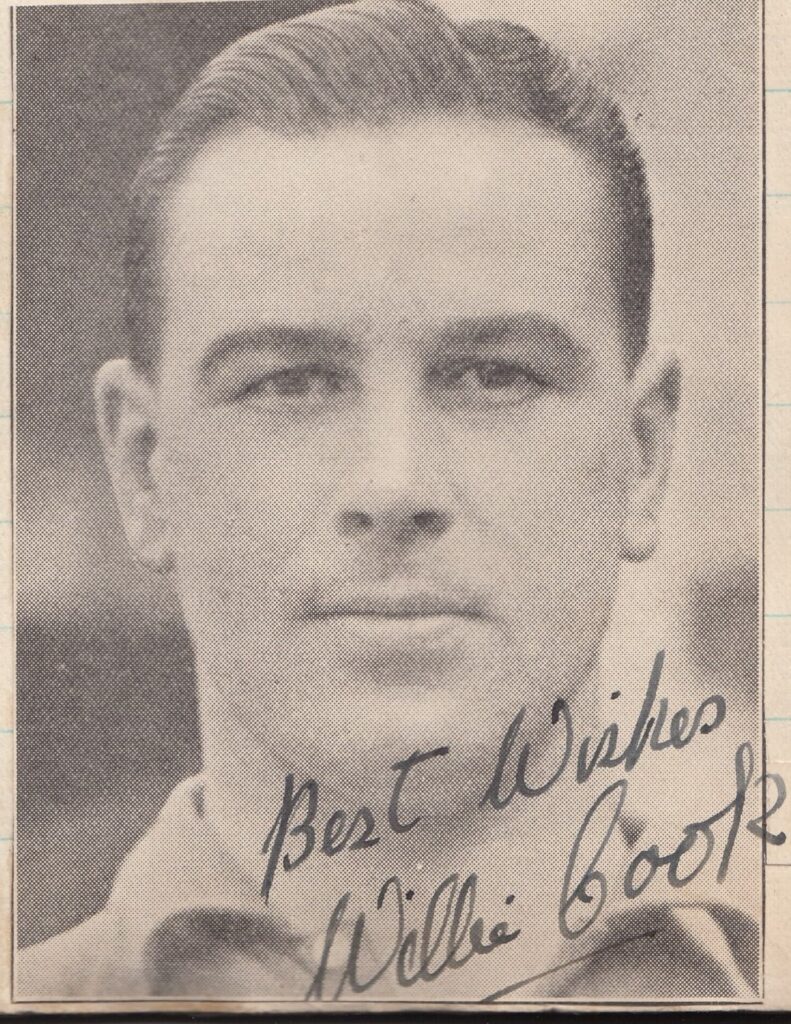
The magazine serial gave insights into Cook’s training regime at Goodison Park (he, literally, lived around the corner from the ground, on Goodison Avenue) and regular squad stays at Harrogate. It also included brief synopses of matches he played in for club and country, plus insights into his social life which, as the owner of a car (not common then, even for a footballer), included regular trips to the cinema, tea rooms, dances, golf courses, and along the Sefton and North Wales coasts. Inside Goodison’s main stand, he was a dab hand on the billiards table – with Tom White his closest rival for supremacy with the cue. Although the identities of clubmates were thinly veiled in his columns, the reader got a clear taste of the camaraderie in an Everton squad brimming with characters like Alex Stevenson, Wally Boyes, Tommy Lawton and Joe Mercer.
Cook was one of the few Everton first-teamers to serve abroad during the war (Ted Sagar and Archie Barber were two others), being based in India for some time. When domestic league football resumed in 1946, he was well into his thirties and was released by Everton after 250 competitive appearances (with all six of his goals coming in the 1938/39 season). He had a brief spell playing in North Wales and it was there that he embarked on a quite extraordinary coaching journey which took him to Asia, South America, Scandinavia, Ireland and around England. Most sensational was his appointment as coach of the Peruvian national team in 1952. A number of British coaches had tried their hand in Europe, but Latin America was largely unchartered territory for so-called ‘Misters’. One person that Cook did follow in the footsteps of was Jack Greenwell, who coached there in the 1930s.
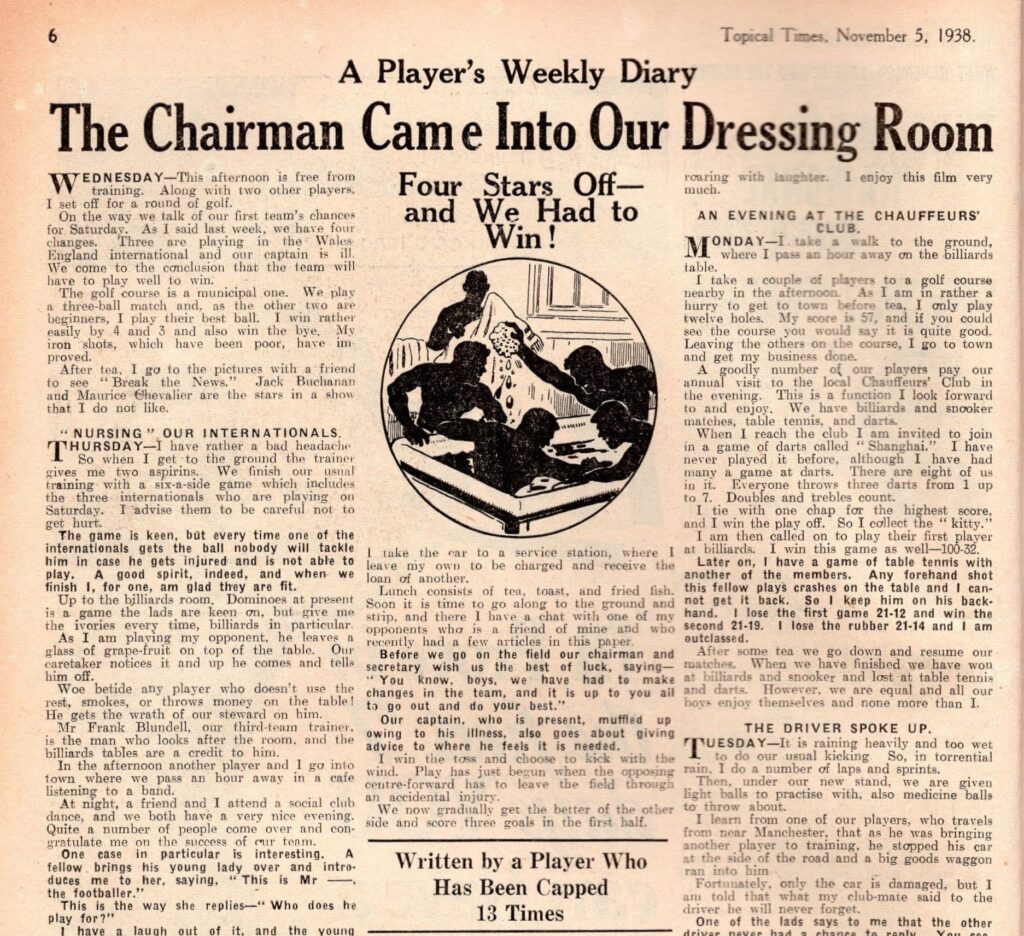
The mission, passed down from Major General Odria, who had acquired power in a coup, was to win the Copa America as a host nation, thereby bringing reflected glory on the military regime. That all said, Cook’s arrival, described below in a Peruvian newspaper, was decidedly low key (note: the original report misspelt his surname name as Coock, it’s been corrected here):
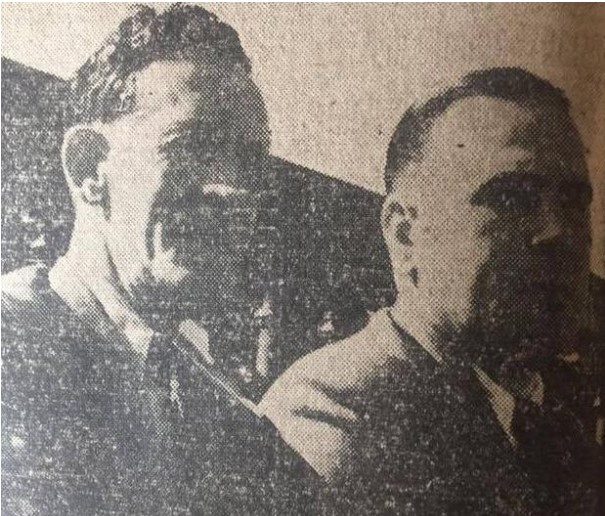
At 21:35 last night, Mr. William Cook, the British coach hired by the Peruvian F.A. to take charge of the national team in the build up to the next South American Championship to take place here in Lima in February 1953, landed on board the ‘Turista’ of Panagra Airways.
Mr. Charles Dean was the only one to meet Mr. Cook at Limatambo Airport. He left the aircraft like any other tourist, his face not lit up by photographer flashbulbs. There wasn’t even a note of excitement among the customs staff given that no one knew ‘Mr. Cook’.
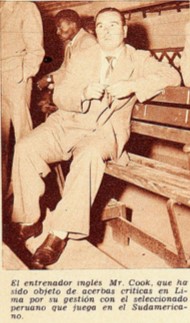
On his arrival in Lima, Mr. Cook took up residence in Suite 505 of The Hotel Bolivar. Leaving the lift and turning left, it was 08:30 in the morning when we went to interview him. We knocked twice and a semi-rough voice answered: ‘Come in’. We went in and our first surprise was to see Mr. Cook reading a crime novel in English that he had got from the hotel bookshop.
We informed Mr. Cook we wished to interview him, asking him at the same time if he spoke Spanish. The British coach told us that he could not receive us in such a state and asked that we do the interview at 10:00. We insisted on interviewing him and Mr. Cook said that it was impossible to talk in bed – without having bathed or having had breakfast. He liked to do things well, or not at all. The photographer prepared his camera to take a picture of Mr Cook in bed. He later picked up an English-Spanish dictionary and, after searching for the appropriate words for a minute said ‘Muchas gracias, no puedo. Buenos días.’
We chose to leave Mr. Cook to return at the revised time. On shaking our hands the British gentleman told us that at 10:00 he would be meeting with the president of the National Sports Committee and that this would, he believed, be the best time to carry out the interview.
At 09:55 in the morning we returned to the Hotel Bolivar. This time we found Mr. Cook in the lobby with the well-known British referee, Mr. Charles Dean. He wore a fawn suit with a blue tie, well-groomed with a silk handkerchief in his breast-pocket. Mr. William Cook is of medium stature. He is 42 years old. It’s worth noting he has aged well because his face is wrinkle free. He’s relatively fat, but still athletic. A very difficult person. Excessively energetic. He doesn’t put up with anything. When they tried to take a second photo he got annoyed saying he hadn’t come to be a ‘propagandista’ but to be a football coach. He does not like to give opinions related to his profession and does not like to joke about it. During the 15-minute duration of the interview there was just one smile of appreciation, when we said goodbye.
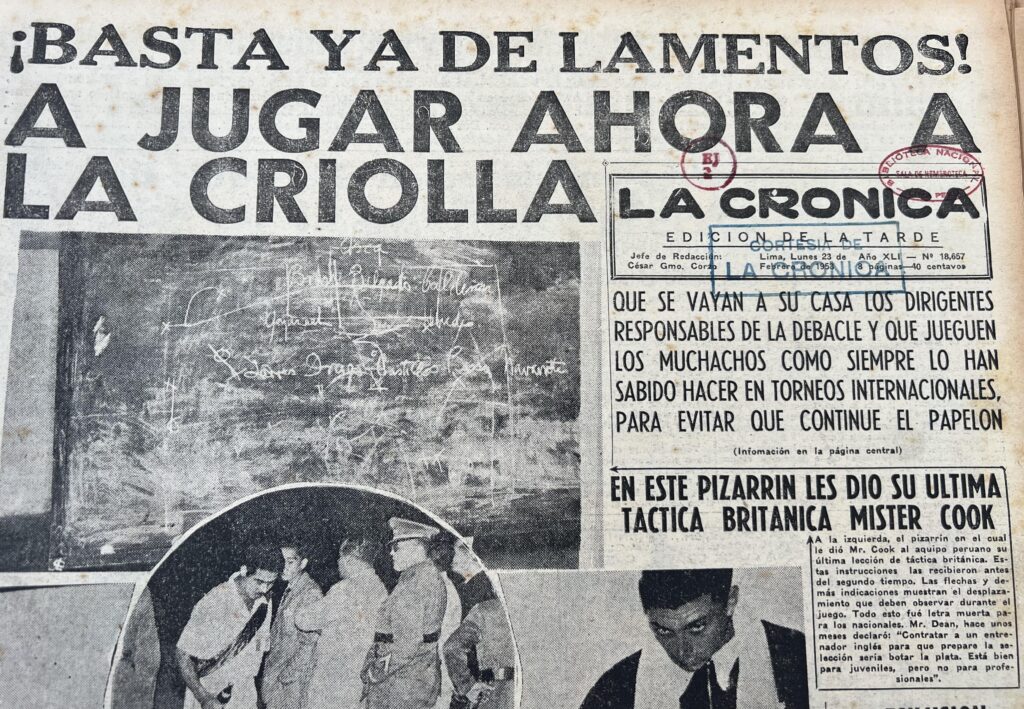
The referee Mr. Dean served as translator during the interview. Mr. William Cook tells us he was born in Ireland 42 years ago. He has been a footballer during 13 consecutive seasons. He represented his country 13 times – 4 as captain. His position was full-back. He played for Celtic from 1929 to 1932. He has been one of the best ball-players in the English professional game and can still play a match. He is a big fan of both the gymnasium and discipline.
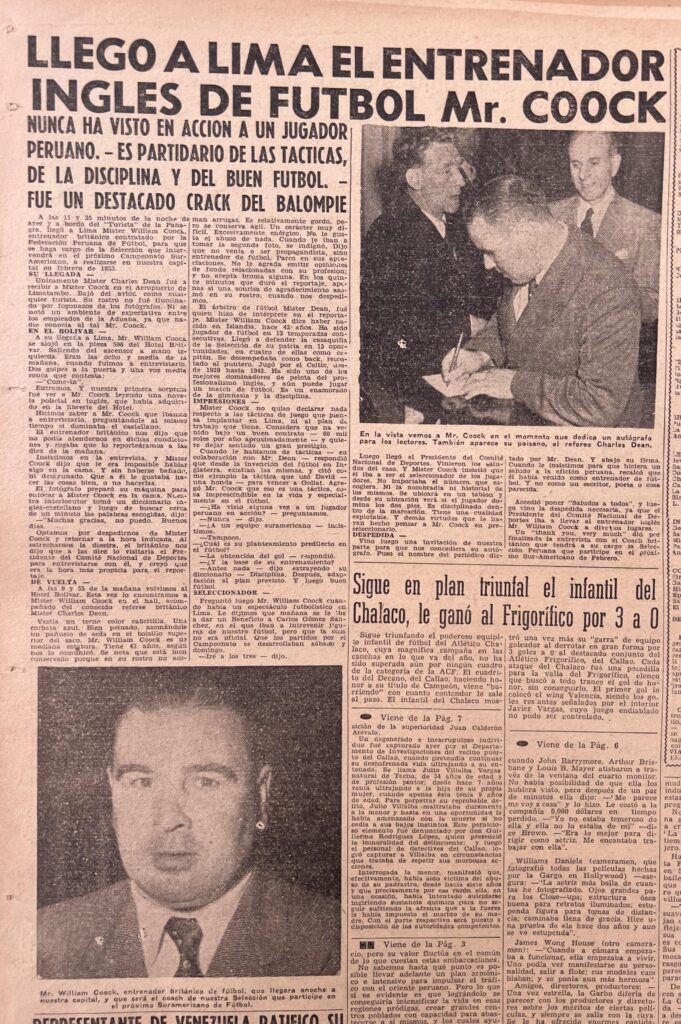
It was a short-lived sojourn in Peru, for multiple reasons. The language barrier was an issue for a non-Spanish speaker but Cook declined the services of an interpreter in training sessions. He later recalled: ‘I would communicate with the players in my own way, and it worked fine. Most of them could speak a bit of English, anyway.’ Then there were the tricky politics of football in a country ruled by a junta, coupled with Cook’s sometimes brusque manner and a tactical approach which won him few allies. Tensions rose when Angel Fernandez Roca, an Argentine, being parachuted in to work alongside Cook with the team.
Ultimately, the results were poor, a defeat to Uruguay confirming that Peru would not lift the Copa on home soil. This confirmed the end of the Irishman’s spell on the Pacific seaboard and he was soon on his way back to Merseyside. The Irishman’s professional coaching career was over when he resigned from his post at Norwich City in 1959.
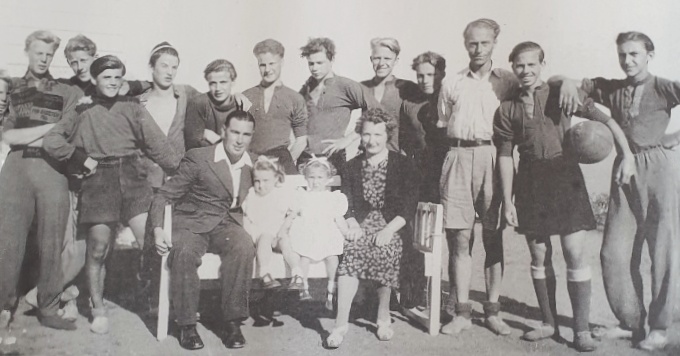
A man of contrasts, Cook could have a decidedly menacing air about him – notably after imbibing a few drinks – but he was something of a man of letters and would diligently respond to correspondence from football supporters. One example of his largesse was when he befriended George de Booij, a young Dutch man who was living period in Liverpool for a few months. Cook gave him some original club photos and other items to take back to the Netherlands (de Booij became an avid Evertonian and returned to watch the Blues at Goodison Park in 1985).
The former Irish international had an enduring passion for imparting his football knowledge on youngsters. In the immediate post-war years, he had been a coach for the local football association, taking training sessions at schools in the Liverpool and Cheshire region. By the 1960s, with time on his hands, he would voluntarily lead regular coaching sessions for youths in a Bootle park. His keynote trick was to boot the ball high into the air and trap it, dead, at the first attempt – amazing his pupils.
By the 1980s he was a fixture at local hostelries, dressed in tweet suit, often wearing a trilby hat, showing patrons his prized medals and photos in return for being stood a drink. Dr John Rowlands, a Formby-based football historian who had befriended one-time Toffees winger Albert Geldard, arranged for the former Everton pair to be reunited at a pub one evening. Ironically, the former outside-right had been petrified of his 1930s clubmate, but the evening went well. Cook was most disappointed when he turned up at the same venue the next week, only to discover that the get-together had been a one-off.
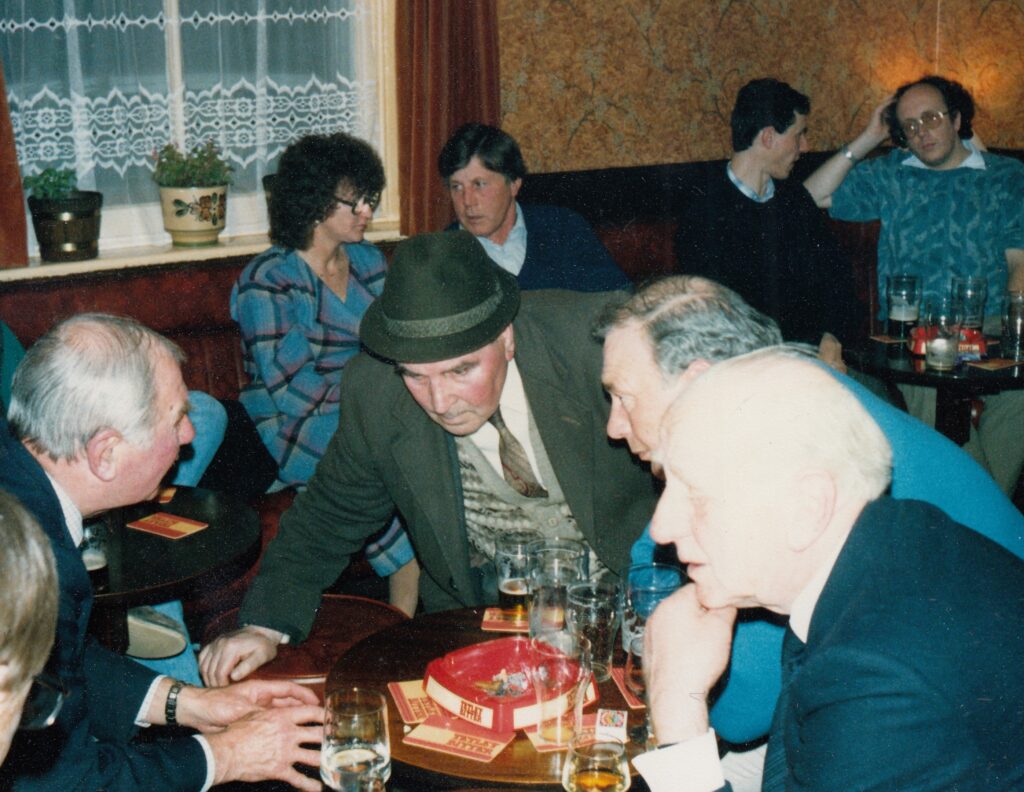
In later life he would attend Everton matches but was non-plussed when the club failed to furnish him with complimentary tickets for some of the biggest matches (this was some years before the establishment of the Everton Former Players’ Foundation, which has helped to look after many old Toffeemen). He spent his final years living on Strafford Drive, before being admitted to hospital in his final months, quite possibly suffering from a form of dementia. One of the most feared yet admired full-backs of the 1930s died on 11 December 1992 at 83 years of age. He lies in an unmarked grave in Bootle Cemetery.
Billy Cook was not alone in facing difficult times after the fame and success – if not riches – enjoyed on the pitch at Goodison Park in the 1930s. Broken Dreams delves into lives of the entire Class of ’39 at the School of Science. These range from the famous names like Ted Sagar, Joe Mercer, Tommy Lawton and T.G. Jones to the tales less told, like those of Torry Gillick, Wally Boyes, Alex Stevenson, Stan Bentham, Norman Greenhalgh, Jock Thomson, Jimmy Cunliffe, Bob Bell, Gordon Watson, Archie Barber et al.
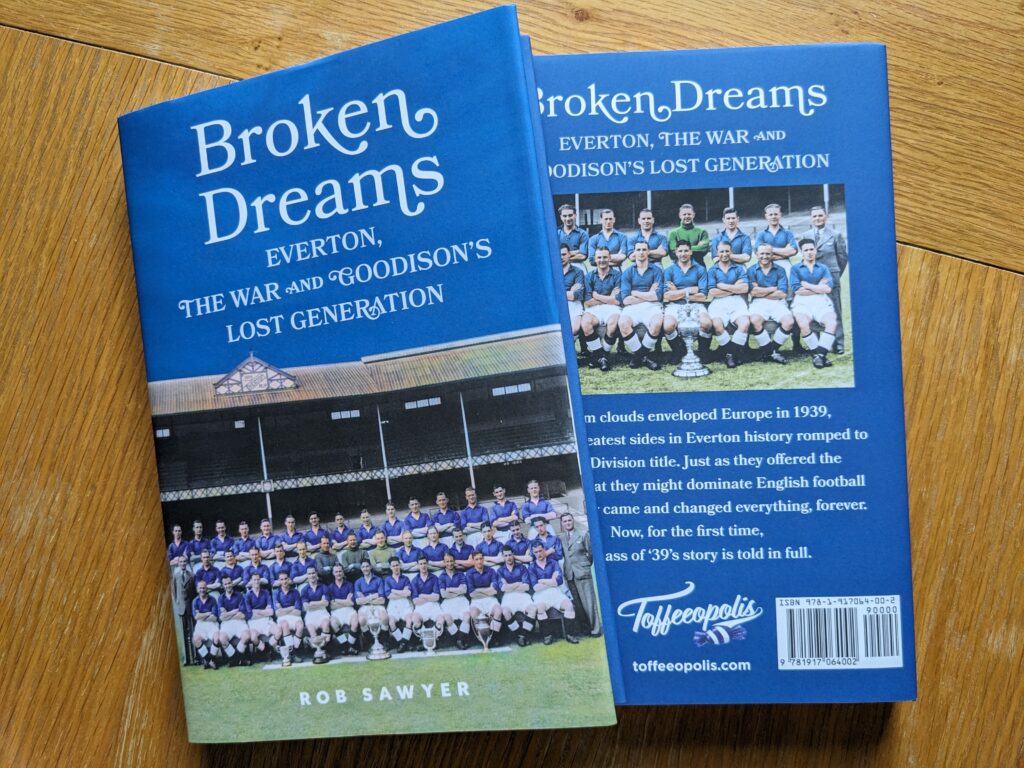
Further Reading
Rob Sawyer, Broken Dreams, Everton, The War and Goodison’s Lost Generation (2024).
Published by the Toffeeopolis imprint (a collaboration between James Corbett, Gavin Buckland, Simon Hart and Rob Sawyer): https://www.mountvernonpublishing.com/catalogue/broken-dreams_79/
Also on Amazon and in bookshops.
Acknowledgement:
My thanks got to Eduardo Combe for supplying the newspaper extracts/images and to John Shearon for translating from Spanish. I appreciate the help, also, of Graham Clare and relatives of Billy Cook, notably John McFeeley.
Sources: Topical Times and several Peruvian newspapers


